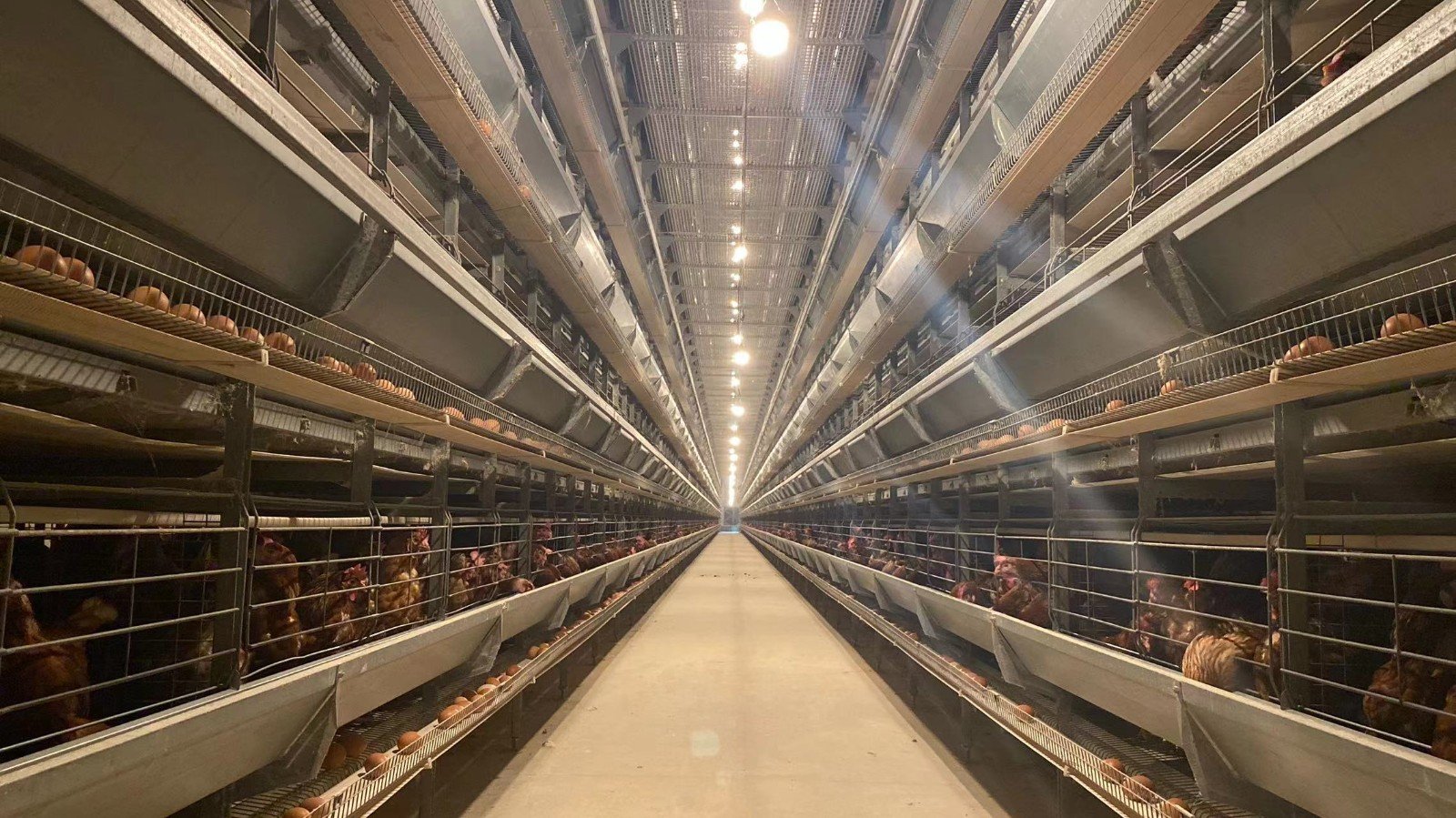Market Analysis
Demand Research: Investigate local and regional egg consumption, price fluctuations, and consumer preferences (e.g., organic eggs, free-range eggs).
Competitive Analysis: Analyze existing farms’ scale, sales channels, and market gaps.
Policy Support: Research government subsidies, loan incentives, or technical support for agriculture/livestock farming.
Business Model Design
Scale: Start small (10,000–50,000 hens) to reduce risk or opt for large-scale operations (100,000+ hens) for cost efficiency.
Rearing Methods: Cage farming (high efficiency but equipment-intensive), free-range (animal welfare-focused), or eco-integrated systems (combining farming with manure recycling).
Sales Positioning: Standard eggs, branded eggs, organic-certified eggs, or processed products (liquid eggs, egg powder).

Initial Investment
Land lease/purchase: ¥100,000–300,000 (varies by region and size).
Chicken house construction: Fully automated facilities cost ¥200–300/m² (¥1.5 million for 50,000 hens).
Equipment: Automated feeding, watering, egg collection, manure removal, and environmental control systems (¥500,000–1 million).
Chicks: ¥3–5 per chick (¥30,000–50,000 for 10,000 chicks).
Operating Costs
Feed: 60–70% of total costs, requiring 40–45 kg/hen/year during laying periods.
Labor, utilities, vaccines, maintenance: ~20% of total costs.
Financing Channels
Agricultural loans, government grants, cooperative partnerships, or investor funding

Location Requirements
At least 500 meters from residential areas and water sources; well-ventilated, dry terrain with road access.
Agricultural land use permits; obtain Animal Epidemic Prevention Qualification Certificate and environmental impact assessment.
Chicken House Design
Structure: South-facing orientation, insulated materials (e.g., color steel sandwich panels), equipped with pad-fan cooling systems.
Zoning: Brooding area, laying area, feed storage, egg storage, manure treatment zone, and quarantine area.
Automation:
Stacked cages (3–4 hens/cage for space efficiency).
Central egg conveyors, nipple drinkers, chain feeders.
Environmental controllers (automated temperature, humidity, and lighting).

Breed Selection
High-yield breeds: Hy-Line Brown (300–320 eggs/year), Lohmann Brown, Jinghong No.1; source from reputable hatcheries.
Contracts: Ensure health guarantees and vaccination records.
Farm Management
Brooding Phase (0–6 weeks): Temperature starts at 35°C, gradually reduced to 20°C; 24-hour lighting; high-protein feed (19–20%).
Laying Phase (18–72 weeks): 16 hours of light/day; feed with 3.5–4% calcium; monitor egg weight and breakage rates.
Disease Prevention:
Vaccinate against Newcastle disease, infectious bronchitis, avian influenza (H5+H7).
Weekly disinfection, strict “all-in/all-out” system, and safe disposal of dead birds.

Cost Control
Negotiate long-term feed supplier contracts; use local ingredients (corn, soybean meal).
Install solar panels to reduce energy costs; convert manure into organic fertilizer for additional revenue.
Sales Channels
Wholesale: Farmers’ markets, food processors.
Retail: Community group buying, supermarkets, e-commerce platforms (e.g., Pinduoduo, Meituan).
Branding: Trademark registration, eco-friendly packaging emphasizing “freshness” and “antibiotic-free” claims.
Data-Driven Management
Use farm management software to track laying rates, mortality, and feed conversion ratios for optimization.
Market Risks: Secure long-term contracts with restaurants or hedge price volatility via egg futures.
Disease Risks: Purchase poultry insurance, establish quarantine zones, and conduct regular antibody testing.
Environmental Risks: Build biogas digesters or manure treatment plants compliant with Livestock Manure Resource Utilization standards.
Inquire Now